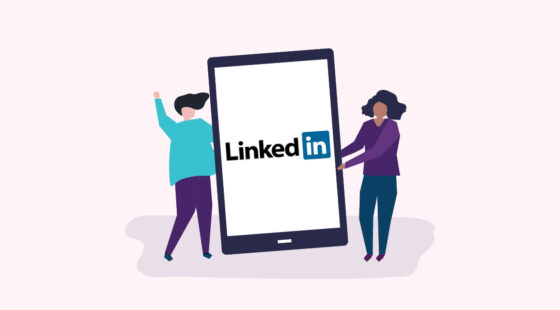 Lara Lee is an experienced independent director, board and committee chair, chief executive and Fortune 50 public company officer with extensive international experience across Europe and Asia-Pacific and a focus on ESG and culture as drivers of growth. She is a recognized expert in strategic marketing and innovation who brings 30 years’ experience leading growth and transformation, dealing with market, channel and digital disruption, and delivering P&L impact from strategy through execution in high growth, turnaround and restructuring situations across a wide range of industries. Lara has served on public and private company boards including direct-to-consumer houseplant retailer The Sill, Inc., progressive produce distributor Organically Grown Company, ag tech pioneer Marrone Bio Innovations, Inc. (NASDAQ:MBII) and iconic brand steward WD-40 Company (NASDAQ:WDFC). She holds a B.A. in Chinese Language from Brown University, a Master’s in International Studies from the University of Pennsylvania and an MBA from The Wharton School.
Lara Lee is an experienced independent director, board and committee chair, chief executive and Fortune 50 public company officer with extensive international experience across Europe and Asia-Pacific and a focus on ESG and culture as drivers of growth. She is a recognized expert in strategic marketing and innovation who brings 30 years’ experience leading growth and transformation, dealing with market, channel and digital disruption, and delivering P&L impact from strategy through execution in high growth, turnaround and restructuring situations across a wide range of industries. Lara has served on public and private company boards including direct-to-consumer houseplant retailer The Sill, Inc., progressive produce distributor Organically Grown Company, ag tech pioneer Marrone Bio Innovations, Inc. (NASDAQ:MBII) and iconic brand steward WD-40 Company (NASDAQ:WDFC). She holds a B.A. in Chinese Language from Brown University, a Master’s in International Studies from the University of Pennsylvania and an MBA from The Wharton School.
What inspired your corporate board journey?
I started my career specifically focused on international business because I wanted to connect people around the world and build bridges across the things that divide us. I studied Chinese as an undergrad, spent years living and working in Asia, then joined Harley-Davidson to build the international business, starting in Europe. I ended up having a very colorful corporate career, and part of what I gained was extremely broad experience dealing with strategic issues of growth, disruption, transformation, and reinvention across many different industries and business models. What I observed is that the single most important factor in virtually every business situation was people: alignment and buy-in of the people to shape and successfully execute a strategy, will of the people to dig in and push through a difficult transformation, and engagement of people to create a great culture, attract top talent and weather unexpected disruptions. I became a student and a proponent of culture as a critical driver of success. I also experienced, first-hand, the outsized impact boards often have in terms of fostering strong cultures and investing in people as a strategic advantage. Bringing that perspective to the boardroom is a natural next step for me as a way to have positive, lasting impact across industries, communities, and generations. And now, with increased awareness of how important boardroom diversity is to achieving effective governance, and the growing understanding of the link between ESG and sustainable business success, I feel like contributing my perspective on people and culture to the boardroom is actually bringing me back full circle to that initial goal of building human connections to create a better world.
What was your greatest obstacle to getting on a public company corporate board?
There were two: corporate policies and my unusually diverse background.
A few years into my time as SVP and corporate officer at Lowe’s Home Improvement, the executive recruiter calls I was getting started to include board opportunities. Unfortunately, Lowe’s had a strict policy against outside board service. So, as I was consistently saying “no” to these great opportunities, I was also highly aware of the need to start making a transition plan if I wanted board service as a next chapter in my career. That’s when I started looking into Women in the Boardroom and mapping out what a board portfolio lifestyle might require. Getting the timing right was a matter of both personal circumstances and finding a natural career transition. It was about being prepared and staying alert for opportunities.
When it came to positioning myself, however, that was a bit more of a challenge. I initially found that many people I talked with wanted to put me into a “box,” defining me as a “marketing expert” or a “retail operator” or a ‘brand guru” or even a “Chinese-speaking international growth pioneer.” The fact is, I’m all those things, and more. I happen to have worked around the world across a wide range of industries and functions for lots of different sized companies, both public and private, and some with unique ownership structures. That diverse experience is a big part of what I bring to the table, but it can be a lot to digest. Coming up with a value proposition that was easy to grasp while capturing what I uniquely contribute to boards took some work and some trial and error. An important skill I learned was how to start conversations in a way that would lead to a deeper dialog because that’s where I’d find the opportunity to curate my story by connecting the most relevant aspects of my experience to the needs of the particular board.
How long did it take you to get your first corporate board seat after you started devoting time to the process?
My first corporate board seat came to me before I had even started actively looking. The founder of a fast-growing, venture-backed direct-to-consumer retailer “stalked” me on LinkedIn based on my expertise in omnichannel retail, branded communities and strategic marketing. I had published an article on “Getting Brand Communities Right” in Harvard Business Review years earlier and that piece of thought leadership has continued to position me as an expert in relationship-based, customer-centric marketing and brand building. I think there’s value, during your board search, to continue presenting yourself as a thought leader with a unique point of view on timely topics.
How did you prepare – in every sense: emotionally, intellectually, practically – for your first board meeting and in what ways did that preparation pay off?
In terms of content, I like to do my homework. It helps me see the big picture, ask more insightful questions, and ensure that I’m adding value to the conversation. Beyond thoroughly reading all meeting materials and making notes in advance, I also like to do a quick internet scan a day or two before the meeting, including reviewing the company’s website to see what’s being presented to customers and other stakeholders, browsing recent news releases, and looking at any analysts’ reports or financial commentary. If there are particular strategic topics on the agenda and I don’t have relevant expertise, I might consult board resources from NACD, McKinsey or one of the big accounting firms to see what experts are saying about the topic.
I also like to build relationships. As part of the onboarding process, I talked with each board member and key members of management to understand their perspectives, what they felt were the most important current issues for the board, and where they thought my perspective could be most helpful. Those 1:1 conversation are important in terms of learning the business but also to establish mutual trust and build the foundation for open dialogue. When you first join a board, people really don’t know you, and because you don’t spend a lot of time together and you all come from different backgrounds, there’s a greater chance of questions or comments being misinterpreted. When you take time to establish personal connections outside the boardroom, it makes people more comfortable asking for clarification when needed and that’s important for a healthy board dynamic.
What has surprised you about the reality of board service versus the expectations that you had coming in – in a positive or maybe not so positive way?
Something interesting is how each board has its own unique character influenced in equal measure by the company’s culture, board and company leadership philosophies, the backgrounds and personalities of individual board members, and the company’s level of governance maturity. I think some people would expect the industry to have a big impact, but I’ve found that to be less of a factor.
What one piece of advice would you offer to women interested in corporate board service?
In terms of finding board opportunities, it really is all about networking and managing your own expectations. I was initially told that the first board seat would likely take a couple of years, but I was able to add one new corporate board in each of the first two years of my journey, and then two public company boards in the third year. That said, I have found each situation to be unique – my latest board appointment was more than 24 months in the making, but in another case the process lasted barely six weeks. There is definitely much more variability than I would have expected in how different boards go about identifying, interviewing, selecting and onboarding new members.
Also, I strongly recommend taking the time at the outset to be really clear with yourself about why you’re interested in board service. What do you want to contribute, what do you want to accomplish, and what do you hope to gain? For me, it’s bringing a global perspective on driving growth, dealing with disruption, and leading transformation, and working with diverse groups of multi-talented individuals to learn, grow, and succeed together in shaping businesses with lasting positive impact.
What knowledge and/or practice specific to WIB prepared you for corporate board service?
I found the Women in the Boardroom webinar on preparing for a board interview very helpful. Sheila has also been a great thinking partner at all stages of the journey and has connected me to highly effective expert resources to help deal with special situations that my boards encountered.






